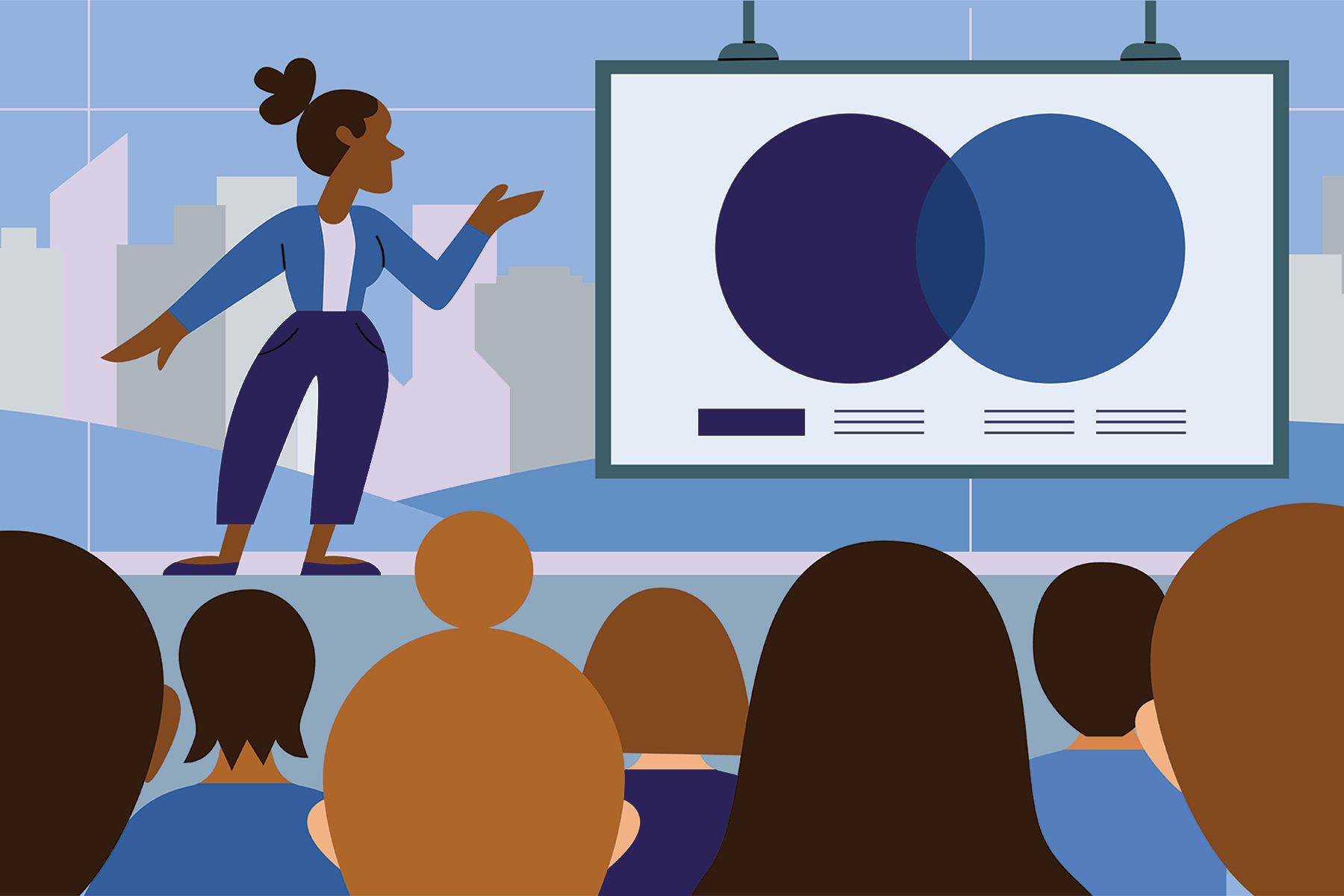Your trusted source for contextualizing gender and economy news. Sign up for our daily newsletter.
Despite progress in other areas of American life, women are still facing discrimination in the workplace — and it’s showing up in their paychecks.
Tuesday’s Equal Pay Day marks the continuing discrepancy between men and women’s salaries, a date the country has been recognizing since 1996. But in the 27 years since the effort began to bring attention to the pay gap, it has narrowed very little.
In 2023, women are earning 77 cents for every dollar earned by White men, the racial group with the highest pay across occupations. That figure takes the average pay for all full- and part-time working women and compares it with the average pay for White men. The figure is calculated based on earnings in 2021, the most recent data available from the U.S. Census Bureau.
In 1996, women were earning 75 cents to the White man’s $1. Then, the number was calculated using only the wages for full-time workers — today the gap comparing full-time earnings alone would be 84 cents for women compared with $1 for White men.
As Equal Pay Day has evolved, the calculation has changed to be more representative of all types of workers, a recognition that one of the drivers of the gap is the fact that women are more likely to work in lower paid jobs and in part-time positions.
Leaving those workers out of the equation misses how deep the disparities really are. In recent years, new Equal Pay Days have been added that look at race and other factors such as motherhood, addressing how women at the intersection of multiple identities are being hit harder by discrimination in the workplace. Equal Pay Days for moms, Black women, Latinas, Native American women and Asian American and Pacific Islander women are recognized on the day in the new year it would take each of those women to catch up to the earnings White men made the year prior.
Also until recently, wages were only analyzed in the gender binary, comparing men and women. Data on LGBTQ+ Americans has been at best limited and at worst nonexistent. Advocates now mark Equal Pay Day for LGBTQ+ people during Pride month in June, a symbolic placement that is used to raise awareness to the fact that the country still doesn’t know what the pay gap is for nonbinary Americans and trans people.
Occupational segregation, the reality that women are concentrated in certain jobs, typically low-paid service sector positions, drives half of the gender pay gap, according to the National Partnership for Women & Families.
But for decades, employers claimed that women were more likely to be in those jobs out of choice, said Aniela Unguresan, the founder of the EDGE Certified Foundation, a leading certifier of diversity, equity and inclusion for businesses across the globe. Much of her work focuses on the gender pay gap.
“For a very long time we thought that's a fact of life — there is nothing we can do about it. [Women] don't want those positions of power and authority. They don't aspire to them,” Unguresan said.
In recent decades it’s become clear that’s not the case, she said.
Studies have found that the inhospitable culture for women in fields dominated by men — stereotypes of them as caregivers or perceptions that they are less qualified — combined with paltry paid leave benefits and limited representation is what has blocked women from entering those fields, not lack of desire or ambition.
And regardless of the industry, whether it’s the legal field of the service sector, the gender pay gap is visible in almost every single occupation when comparing average wages for men and women.
Occupational segregation, then, occurs when there is no pipeline for women to enter into different fields — and it hurts women of color especially.
About 1 in 7 Latinas work in the hospitality sector, the most of any group. About 1 in 5 Black women work in the health care sector, but in the lowest paid jobs in the industry, including in long-term care, nursing and as nursing aides. As a result, at least 50 percent of all women of color — Black women, Latinas, Native American women and Asian American and Pacific Islander women — are earning below a living wage in 40 states.
The pay gap is so prevalent, in fact, that it’s visible in every state in the country.
The gap is typically wider across the South, where many women of color are concentrated, and in states where women make up larger shares of the workforce in low-wage jobs. In Nevada, for example, women are most likely to work as housekeepers. In Utah, they’re most likely to be customer service representatives. In Louisiana, they’re most likely to be elementary and middle school teachers.
A combination of race and job distribution, as well as minimum wage laws and job protections, factor into each state’s gap.
The other driver of the pay gap is continuing discrimination, and perhaps one of the clearest examples of how it plays out is in looking at what happens to the pay gap as women age.
Conventional notions of men as breadwinners and women as caregivers are so entrenched that women are still seeing penalties to their pay after they become mothers — or, regardless of if they have children, around the age when women typically become mothers.
Men who have children instead get a bonus in pay, according to a recent study by the Pew Research Center.
According to Pew, younger women ages 25 to 34 have been edging closer to parity with men over the years, but then the gap begins to widen as they age. A good share of that widening happens when women are between 35 and 44, the ages when they are most likely to have children under 18 at home.
Because the United States is one of only about a handful of countries on the planet that doesn’t offer paid family leave, women who have children are often expected to return to work within mere weeks of giving birth. A quarter of moms return to work two weeks after childbirth. But most daycares won’t take children until they are at least six weeks old — if parents can even find a spot and pay for the expense. The cost of child care exceeds the cost of in-state public college tuition in 34 states and Washington, D.C.
This broken care system makes it difficult for mothers to stay in the workforce. About 1.4 million younger mothers left the workforce in 2022, Pew found. When they return, they are often returning at lower pay and are routinely passed over for promotions due to stereotypes that they are less committed to their jobs.
Closing a gap that has been frozen for decades will have to come through legislation, advocates said.
One potential piece of legislation is the Paycheck Fairness Act, which was reintroduced in Congress last week. The bill would strengthen existing equal pay legislation, barring employers from asking about a worker’s salary history, and, in cases of alleged discrimination, employers would have to prove why a pay disparity exists.
The bill was first introduced in 1997 and has yet to pass.
Even still, some argue that the proposal doesn’t go far enough.
Unguresan, who works with Fortune 500 companies in the United States and Europe, said the key differentiator in why Europe has been more successful in closing the gap is legislation around quotas for women in certain jobs, expansive paid leave benefits and pay transparency reporting. Unlike in the United States, those are matters of the law and not a company’s choice, she said.
Take the quota legislation in France — executive teams and boards have to be made up of 40 percent women by 2030. When France first enacted a quota for executive boards more than a decade ago, the share of women shot up from 10 percent in 2009 to 45 percent in 2019.
“Europe has many more regulations and legislation. … You can hate them, you can love them, but you cannot ignore them,” Unguresan said. “The law is the law — that’s it.”




